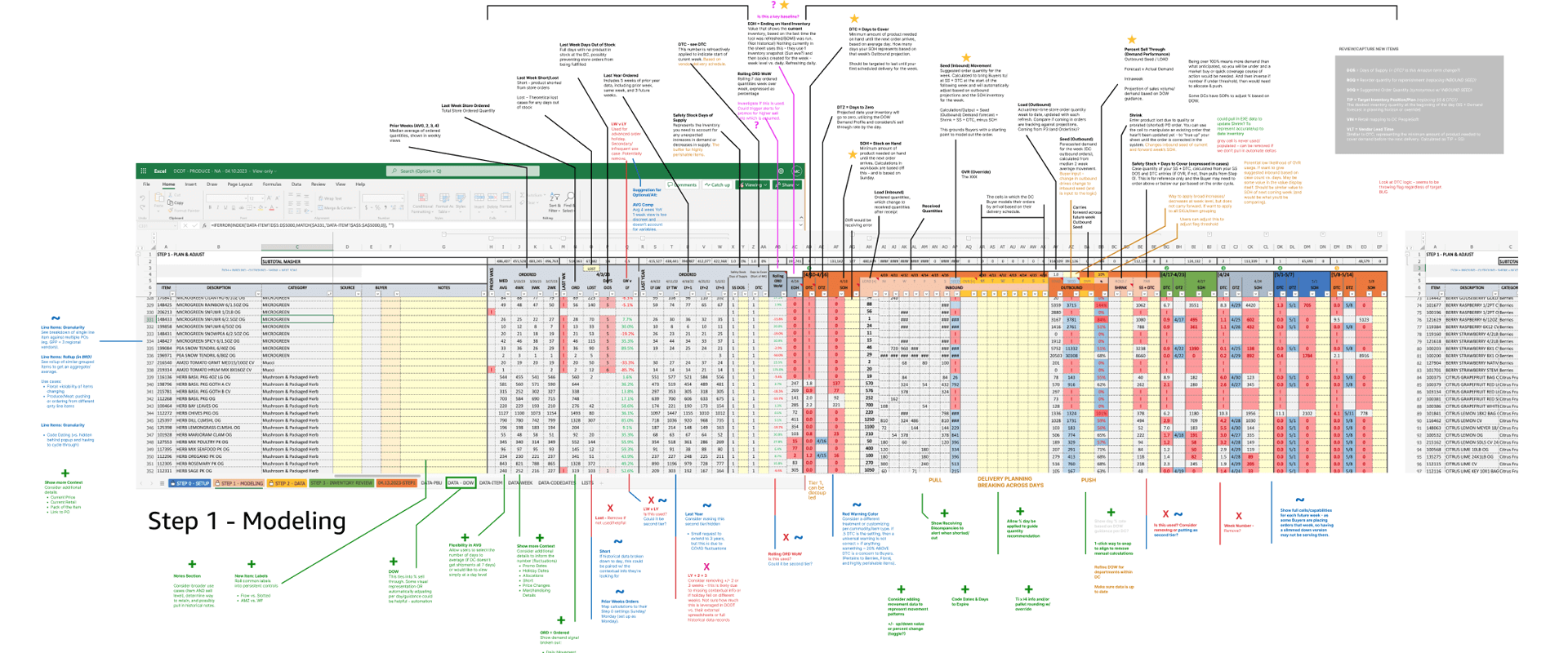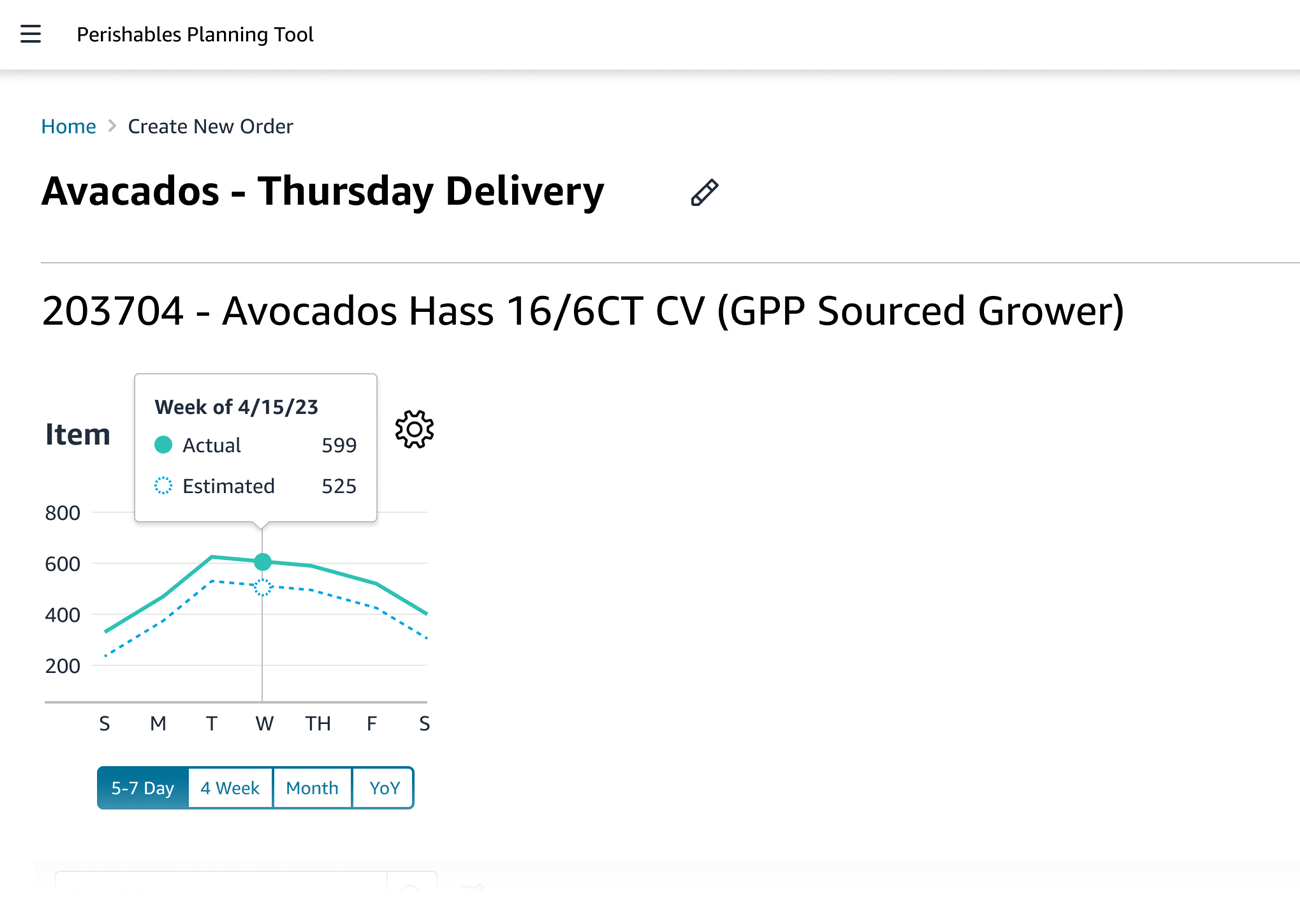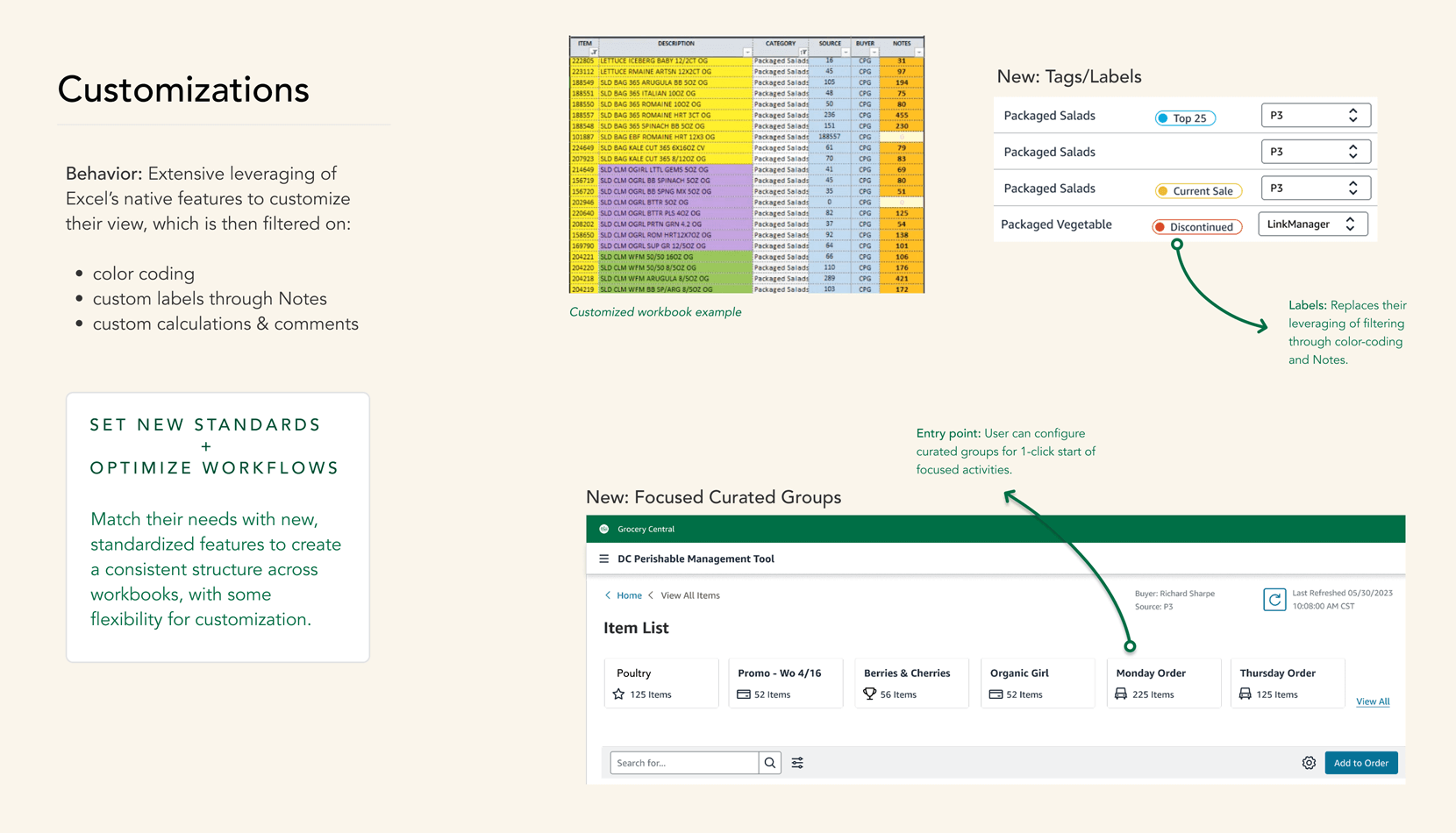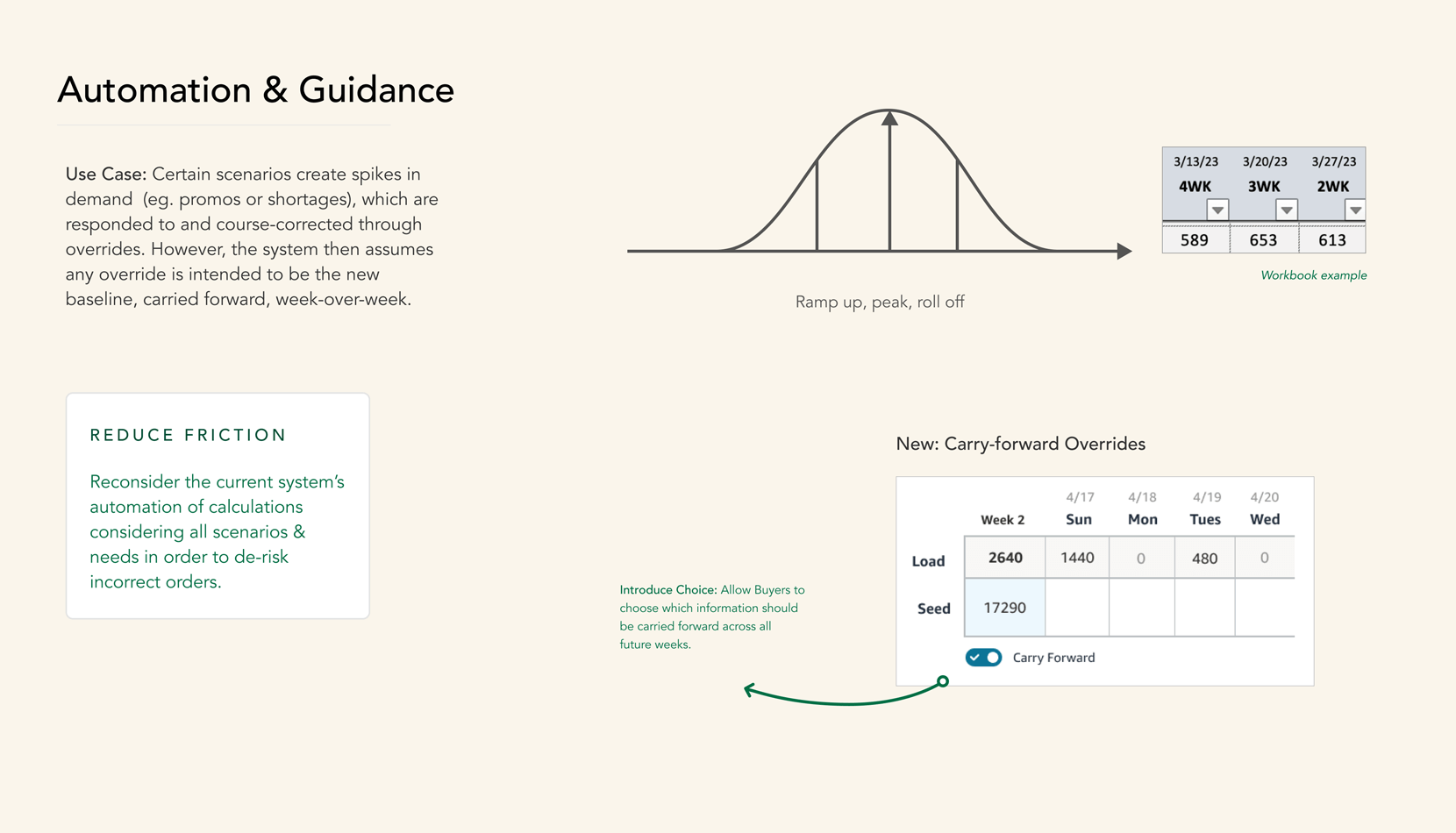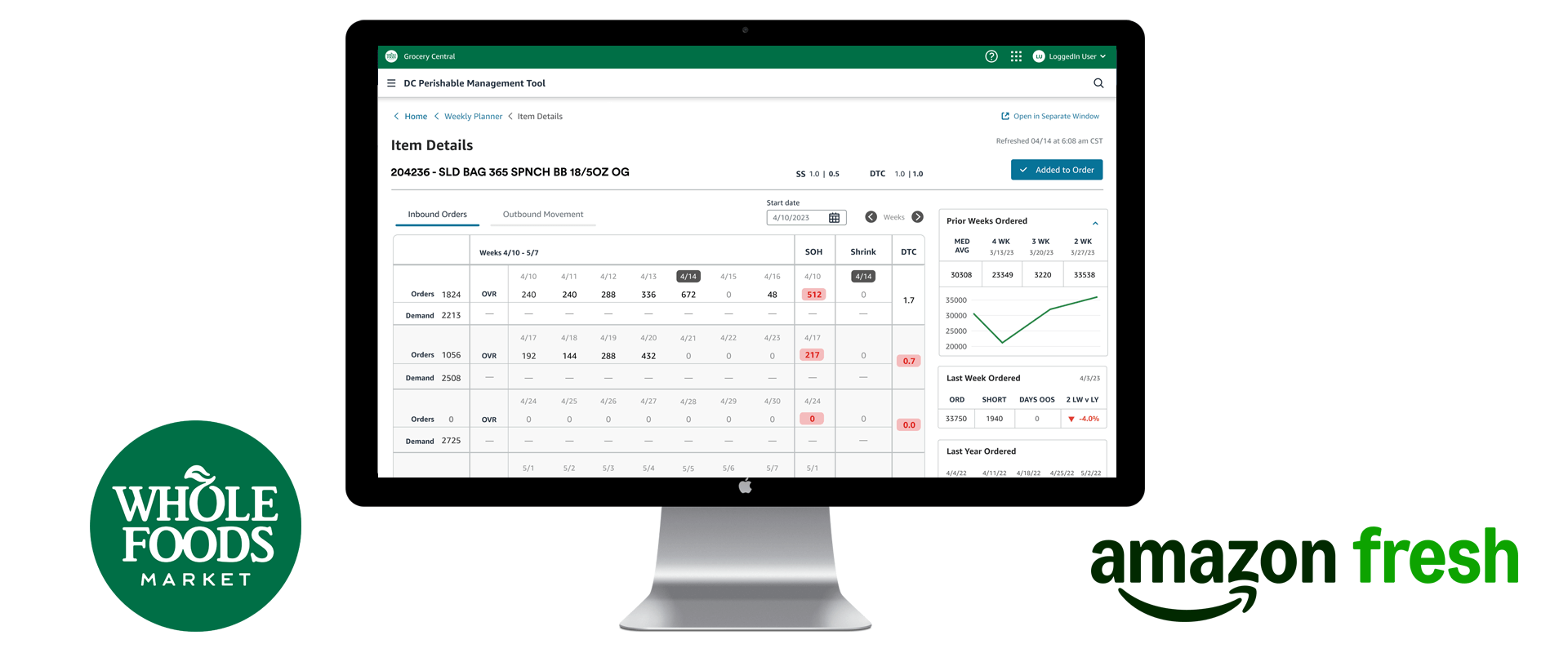
Company: Whole Foods & Amazon Fresh
Role: Product Design Lead
Timeline: 6 months (2 months Discovery, 4 months Design)
Released: 2024
Note: Due to the sensitive nature of this project, wireframes are only shown. Additional designs can be produced upon request.
Summary
A re-platformed tool to enable Distribution Center Buyers to forecast, buy, and monitor the supply and demand flow of $3B worth of perishable products, unlocking ~$10M in annual entitlement for Whole Foods & Amazon Fresh Grocery.
Challenges
This project had a false start with the Amazon Engineers at the helm; they had created a draft of the requirements document that did not meet the internal business stakeholders acceptance criteria. I was tapped to step in and quickly get up to speed, led and conducted interviews with users and business stakeholders to understand the problem space, paired with a PM to define a new set of requirements, and prototyped and designed a new user interface that would set the foundation of a multi-year, multi-phased migration plan. I was able to quickly show evidence that we were keeping the internal user goals in mind, build trust and alignment with the internal teams, while innovating on the new solution.
